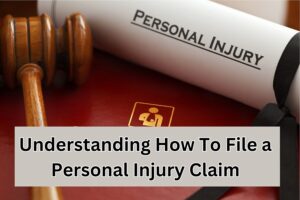Legal Things to Know When a Defective Product Harms You

If you’ve been hurt by a product, there’s a good chance that it was defective (unless you knowingly used it dangerously.) If you were merely using the product for it’s intended purpose and were harmed, even if that harm isn’t permanent or debilitating, you may have a case.
If you have a defective and dangerous product, chances are that someone else does, too. These are rarely one-off occurrences. By determining if you have a case, and pursuing it if you do, not only are you on the path to earning recompense, but you may be helping to prevent further harm to others who may have the same defective product. The following information will help you know what to do to determine if you have a viable case.
Get Medical Attention and Documentation
If you’ve been hurt by a defective product, no matter how insignificant it may seem, you need to seek medical attention, even if it’s just to create a record. If possible, secure the defective item before you leave to prevent further harm to you, your family, or others. Don’t dispose of the item, secure it.
If possible, make an emergency appointment with your GP. In all other cases, visit the nearest emergency room or clinic. Make sure to mention how the injury occurred. Use as much detail as possible and ask to have a note made in the medical record, if possible. These transcripts and notes may be used as evidence at a later date if you have a viable case.
Gather Information
Once your health is no longer in jeopardy and the defective product has been secured, you need to start gathering evidence and information to build your case. This step isn’t as tricky or as involved as it sounds and should take less than two hours from start to finish.
- Product Warnings – Before any other information is gathered, double check all warnings on the product and it’s packaging. Did how you were injured have anything to do with what the warnings said not to do? If yes, you do not have a case though you may still be able to file a safety complaint. If, however, there is no warning relevant to your situation, move on.
- Product Recalls – Your next step is to look up the product to see if it has been recalled. In the US, the best places to look up a recall for general goods and products is cpsc.gov/recalls. A list of reliable sites to check for food, vehicle, and government recalls can also be found at usa.gov/recalls.
- Pictures – If the product in question is not recalled and has insufficient warnings, take photos of it, of your injuries, and the scene of the accident, if possible. The sooner these pictures are taken after the accident occurs, the better.
- Create a Written Account and Timeline – Human memory is fallible. Make sure to write down exactly what happened, with times and dates as accurately as you can remember them soon after the defective product has caused you harm. If you don’t write it down, there’s no guarantee that you won’t forget a critical detail at a later time.
Know the Main Types of Defective Products
There are three main types of defective products.
- Manufacturing Defect – If a product has a manufacturing defect, it means that not every product in its line was defective. Something happened during the manufacturing process to cause the item you purchased to become hazardous- it wasn’t designed that way. This could mean that only a handful of products are dangerous, or it could mean hundreds of thousands.
- Design Defect – On the other hand, if something in design was overlooked and the product went to market anyway, this is a design flaw and likely effects the entire batch of products.
- Inadequate Warning – In the information gathering step, you checked the packaging and instructional materials for warnings. Could an additional notice have protected you from harm? Is there a warning that should have been included but wasn’t?
Do Warranties Matter?
One of the big questions consumers may have if they’ve been injured by a product is if the state of the warranty matters. In nearly every case, warranties, whether implied or explicit, don’t mean anything when it comes to determining if you have a case. An experienced attorney should be able to confirm this fact.
Did You Alter the Product?
Altering the product in any way will very likely invalidate your case. Examples of alteration include using improper fuels and solutions, modifying or swapping out parts, and anything else that changes the out-of-the-box structure of the product. Modifications do not involve using accessories included with the product for their intended purpose and use.
Do You Have a Case?
If you’ve gone through all of the steps above, the last question to answer is, was it “Reasonable Use”? Did you use the product in the way it was intended to be used? In most cases, this should be a yes, especially if you’ve made it this far. If, however, you used the item for a use that is not “reasonable,” “common,” or “expected” your case may be invalid.
Consult an Attorney with Relevant Experience
With any situation involving a defective product, consulting an attorney should be your next step, once you’ve gathered as much information as possible on your own. Consultations, like those with the lawyers of www.ohiovalleypilawyers.com, are typically free. An experienced attorney will help you through the entire case and claim process and help you achieve the best possible outcome with the least hassle.






